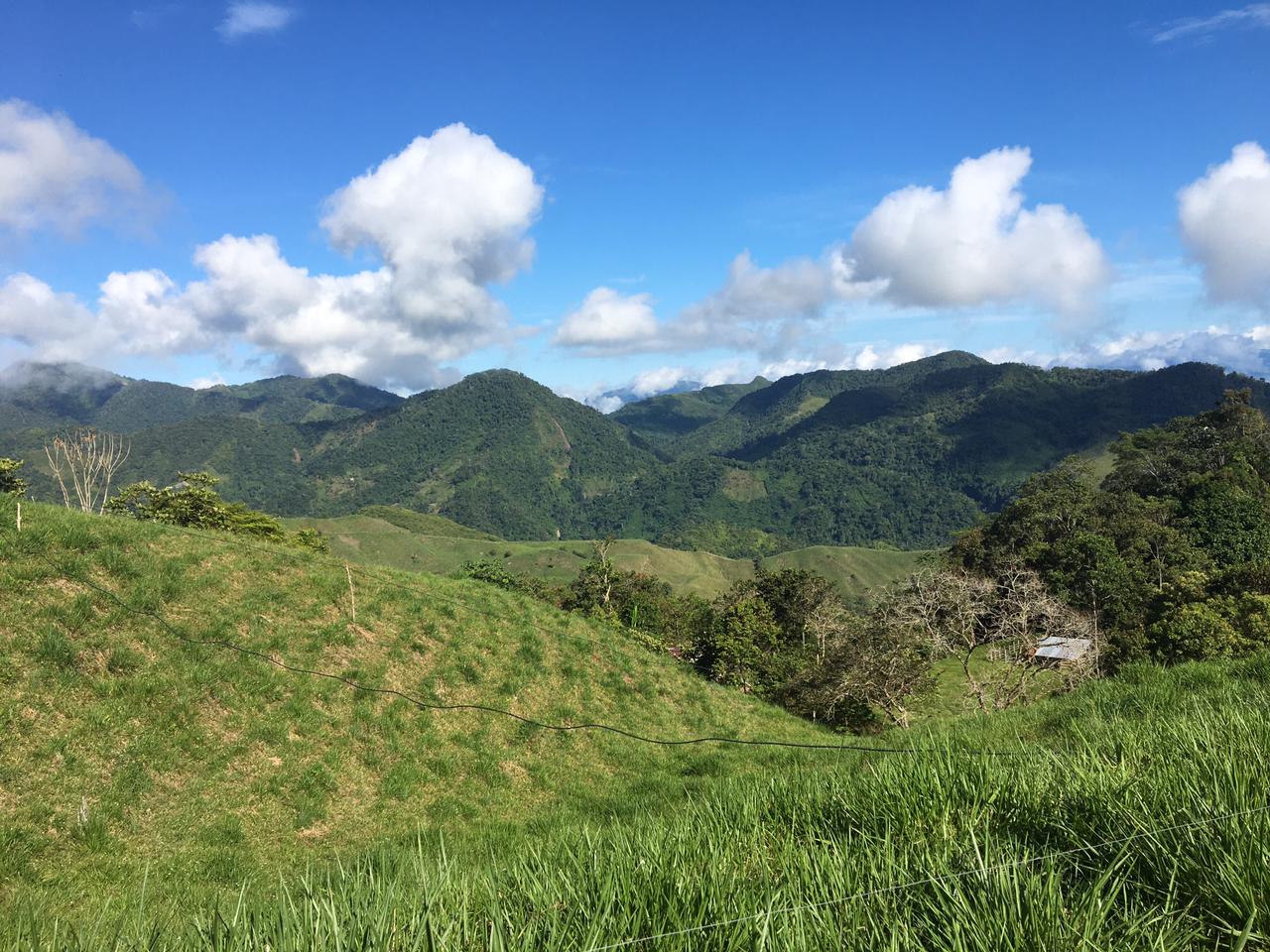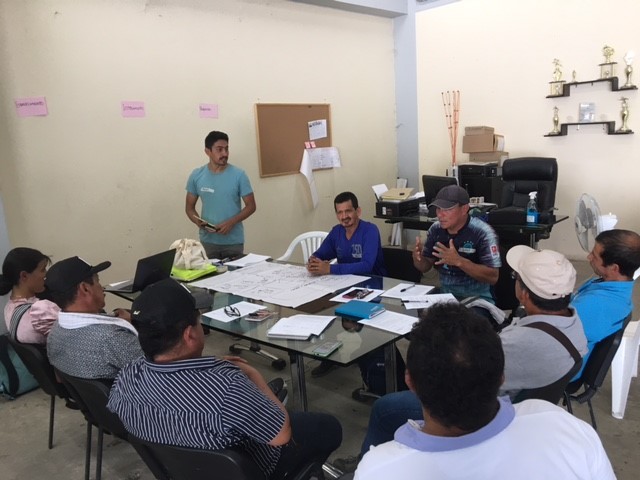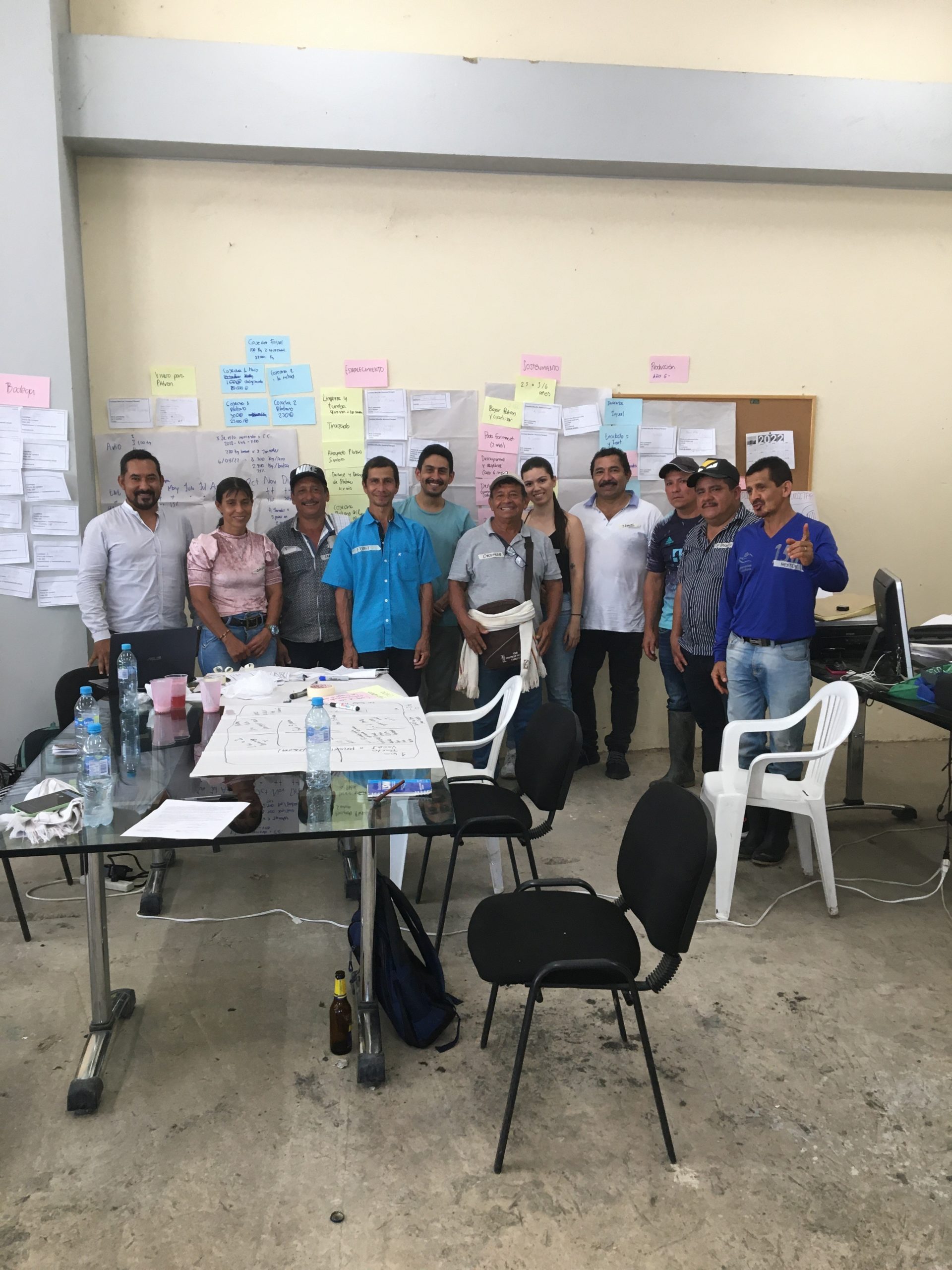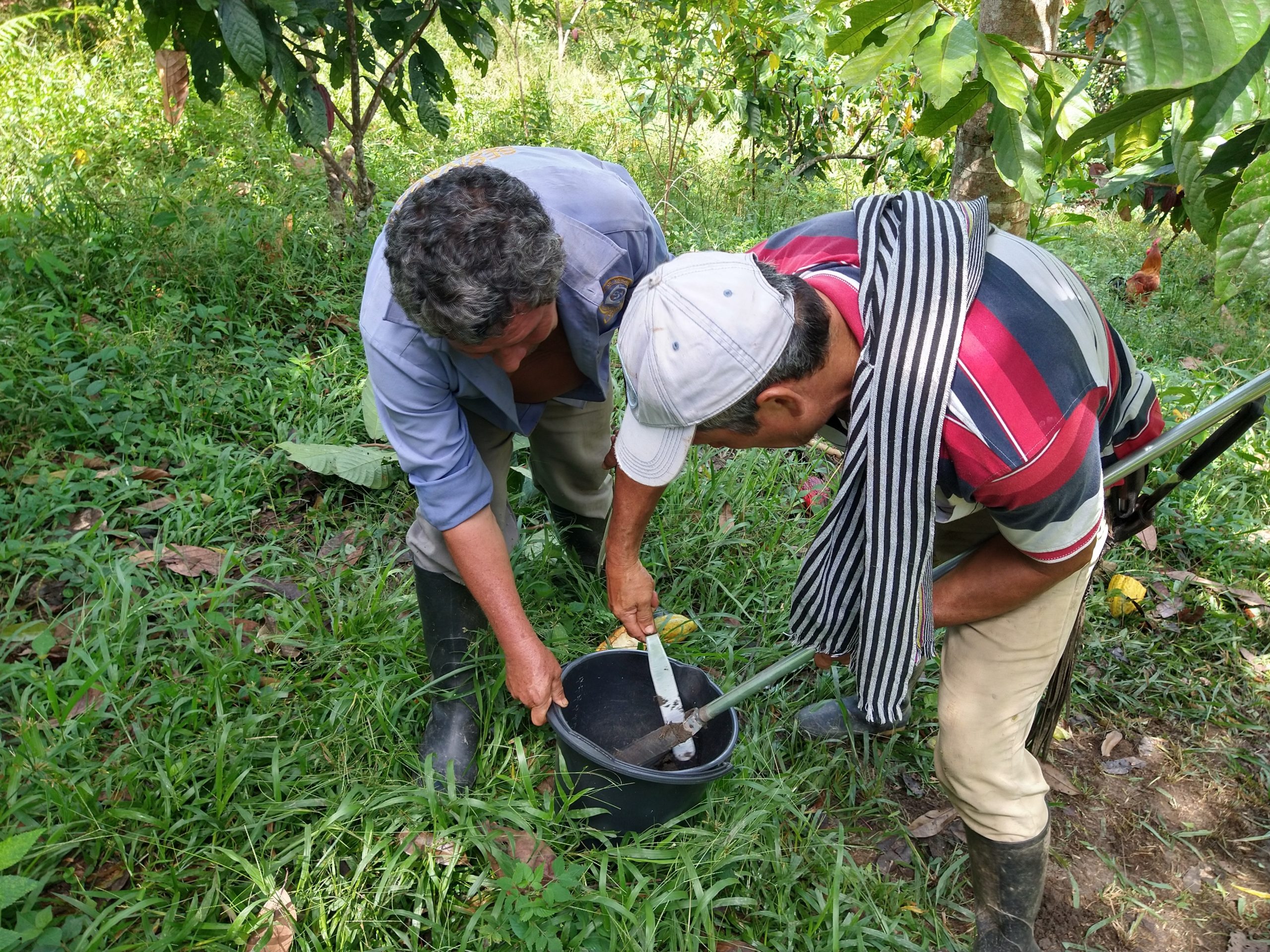
Some years ago I heard for the first time and without much detail about the conflicts for the control of the emerald mines that took place during several decades in western Boyacá; the so-called “green wars” that add one more chapter to the long list of tragic events in our country.
In one of our visits to the great region of western Boyacá, together with other fellow researchers of the Clima-LoCa project, I was fortunate to hear from the mouths of former emerald farmers from that golden era of production, but gray because of the conflict, survivors of the war and today proud cocoa growers, how they went from fighting to death among neighbors, to sharing tips to eliminate pests in their crop or discussing which cocoa clone “hits” more in their area.
As part of the socioeconomic component of the project, our mission was to collect information to understand the context and particularities of the cocoa value chain in the department, the conditions of the producers and the prevailing characteristics of the production systems in the region. Thus, we planned a series of workshops and interviews with producers from different municipalities who relived many moments and recalled how cocoa transformed their lives.

Boyaca’s economy has had a strong agricultural tradition; however, emerald mining motivated the peasantry to leave their agricultural activity and migrate to this much more lucrative work. In one of the workshops, farmers told us how the emerald mining families, military squads and large gangs confronted each other for control of the mines. “At that time I couldn’t sit next to him like I am here now, because we would kill each other,” said one of the farmers, referring to another cocoa farmer who also attended the workshop.
Hopelessness, exhaustion and resignation, added to the more than 4,000 dead left by the scourge of war, led to the signing of a peace agreement in 1990. However, this was not the end of the conflict. Producers recalled how the planting of illicit crops became the main livelihood of peasant families after the end of these negotiations. Many peasants became coca growers in search of a livelihood and a dignified life for their families. The peasants who survived the war had to face another battle that generated conflicts between neighbors and friends over the production and commercialization of coca leaf, coca base and inputs for the manufacture of coca.

One of the producers sadly told us how the conflict and drug trafficking not only took many lives and destroyed communities, but also brought alcoholism, prostitution and great damage to the ecosystem, as coca plantations were established at the cost of deforestation of important areas of forest.
At this point, the community felt they had only 3 options: death, loss of their patrimony due to the extinction of their property, or loss of their freedom. Thus, tired of these conditions, in 2004 a group of farmers took the lead and decided to leave coca production and return to agriculture, thus forming the main organizations of agricultural producers. It was at this time that the transition to the cocoa culture began in western Boyacá.
Several of the producers with whom we had the good fortune to talk, decided to bet on cocoa as a legitimate livelihood alternative for their families. Several of them told us that, thanks to cocoa, they can now sit down on Sundays in the center of town to have a beer in peace and quiet.
Today these same families, and others who have joined along the way, are part of the Fundación Red Colombia Agroperacuaria (FUNREDAGRO), a second-tier organization, born out of the need for producer associations to support and sustain themselves in order to keep their cocoa activity afloat. FUNREDAGRO currently represents 10 cocoa producer organizations from 8 municipalities in the western province.

Although cocoa has generated licit income and helped to restore peace in the region, there are many needs and difficulties that farmers experience in their daily work. Changes in the climate and the increase in the price of labor and inputs have meant an enormous challenge to obtain a decent income for many families who are still in vulnerable conditions. In addition, the advanced age of producers represents a threat to the sector, as labor is scarce and young people continue to migrate to the city in search of better opportunities.
Although rumors of a “new green war” have been heard, there is no longer a war among farming families, but economic needs and lack of opportunities persist. This worries the community and awakens in some the idea of returning to the past, however, this fades when remembering the hardship experienced. One of the representatives of the first associations said: “Western Boyacá is an example not only of peace, but also of reconversion and abstinence. Every day we fight to maintain the cocoa culture and leave behind the culture of war and illegality”.
Authors
Carolay Perea with the collaboration of Andrés Charry, research associates, Bioversity-CIAT Alliance (c.perea@cgiar.org), Clima-LoCa project.
Clima-LoCa is a regional project led by the Bioversity Alliance and CIAT, implemented with research partners from Latin America and Europe, and funded by the European Union. The project contributes to the objectives of the 2018 call “Climate Relevant Innovation through Research in Agriculture” of the DeSIRA (Development Smart Innovation through Research in Agriculture) platform.
Disclaimer
Its contents are the sole responsibility of the author and do not necessarily reflect the views of the European Union.
Copyright © 2023 Alliance of Bioversity International and International Center for Tropical Agriculture (CIAT)
